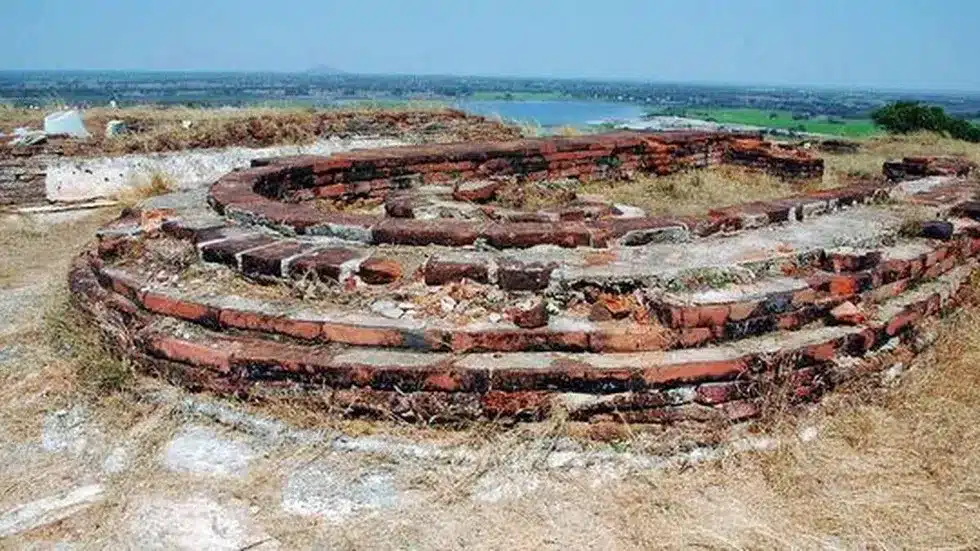About Phanigiri
- It is a famous Buddhist site located 110 km away from Hyderabad.
- This site derived its name from the shape of the hillock, which appears to be like a snake hood. The word Phani in Sanskrit means snake and Giri means hillock.
- It is believed to be one of the important Buddhist monasteries strategically located on the ancient trade route (Dakshinapatha) connecting the west and the east coast of the Deccan.
Other findings of the excavation
- Coins: Lead coins with elephant symbol on one side and Ujjain symbol on the other side are found.
- According to the archaeologists, the coins belong to the Ikshvaku period dated between 3rd century and 4th century Common Era.
- Also stone beads, glass beads, shell bangle fragments, stucco motifs, broken limestone sculptures, a wheel of a toy cart, final nails and pottery are excavated.
- Mahastupa, apsidal Chaityagrihas, Votive stupas, pillared congregation halls, Viharas, platforms with staircases at various levels, octagonal stupa chaitya, 24-pillared mandapam, circular chaitya, and cultural materials that included terracotta beads, semi-precious beads, iron objects, Brahmi label inscriptions and holy relic casket are also excavated.
- All the cultural material is datable from the 1st century BCE to 4th century CE.
Q1: What is a stupa?
It is a hemispherical or dome-shaped structure that contains relics of the Buddha or other sacred objects. Stupas are a fundamental element of Buddhist architecture and have been built across the Buddhist world for thousands of years.
Last updated on June, 2025
→ UPSC Notification 2025 was released on 22nd January 2025.
→ UPSC Prelims Result 2025 is out now for the CSE held on 25 May 2025.
→ UPSC Prelims Question Paper 2025 and Unofficial Prelims Answer Key 2025 are available now.
→ UPSC Calendar 2026 is released on 15th May, 2025.
→ The UPSC Vacancy 2025 were released 1129, out of which 979 were for UPSC CSE and remaining 150 are for UPSC IFoS.
→ UPSC Mains 2025 will be conducted on 22nd August 2025.
→ UPSC Prelims 2026 will be conducted on 24th May, 2026 & UPSC Mains 2026 will be conducted on 21st August 2026.
→ The UPSC Selection Process is of 3 stages-Prelims, Mains and Interview.
→ UPSC Result 2024 is released with latest UPSC Marksheet 2024. Check Now!
→ UPSC Toppers List 2024 is released now. Shakti Dubey is UPSC AIR 1 2024 Topper.
→ Also check Best IAS Coaching in Delhi
























